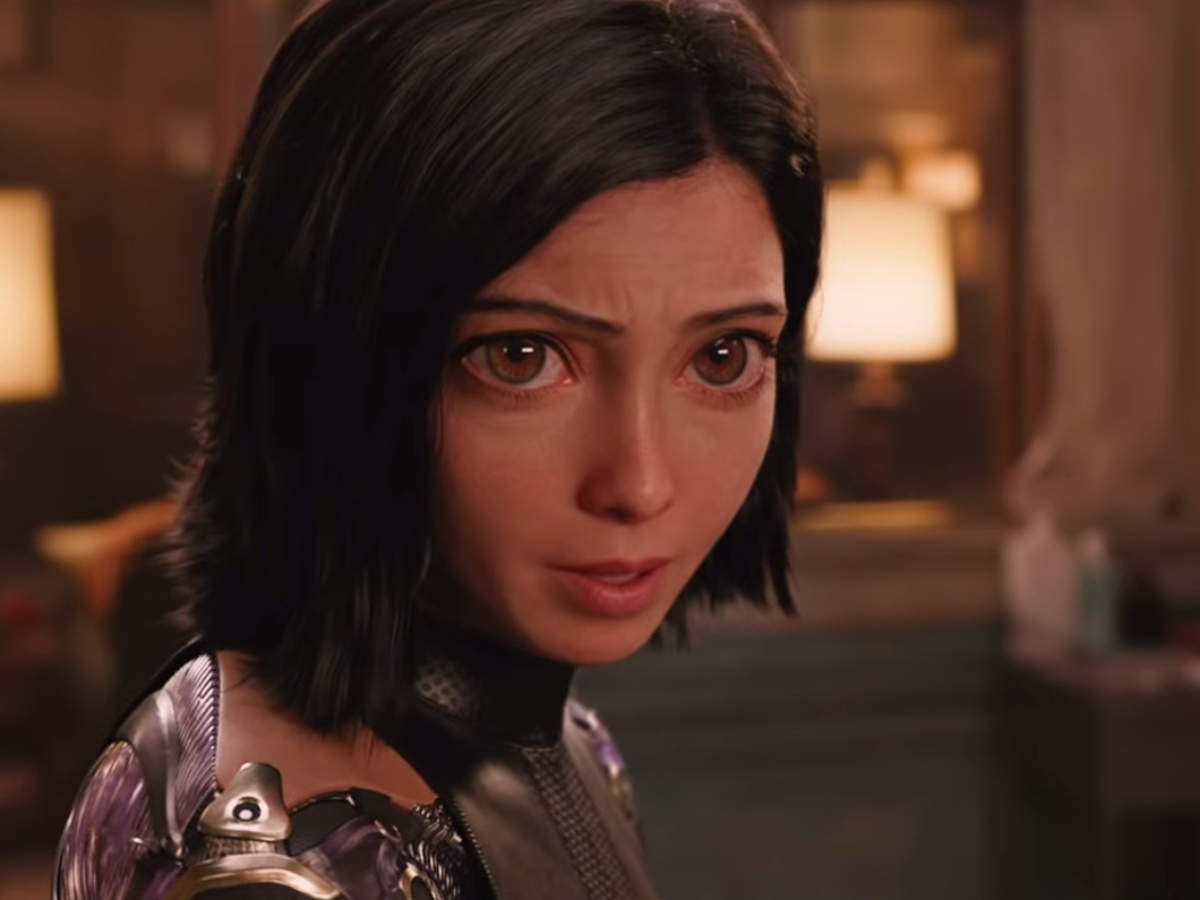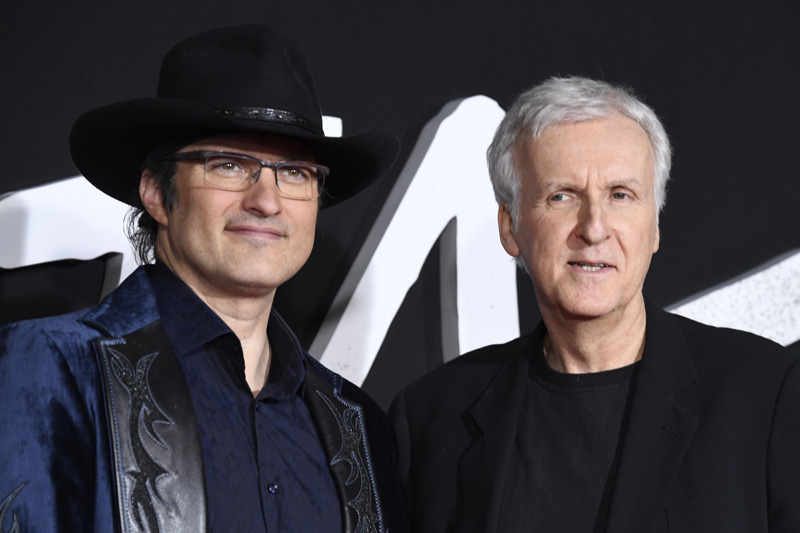20th Century Fox provided ComingSoon.net the opportunity to speak with director Robert Rodriguez about applying the methodology of James Cameron while making Alita: Battle Angel. Check out Robert Rodriguez’s Rules for Making a James Cameron Film in the gallery below!
RELATED: Alita: Battle Angel Review
Visionary filmmakers James Cameron (Avatar) and Robert Rodriguez (Sin City) create a groundbreaking new heroine in Alita: Battle Angel, an action-packed story of hope, love and empowerment. Set several centuries in the future, the abandoned Alita (Rosa Salazar) is found in the scrapyard of Iron City by Ido (Christoph Waltz), a compassionate cyber-doctor who takes the unconscious cyborg Alita to his clinic. When Alita awakens she has no memory of who she is, nor does she have any recognition of the world she finds herself in.
Everything is new to Alita, every experience a first. As she learns to navigate her new life and the treacherous streets of Iron City, Ido tries to shield Alita from her mysterious past while her street-smart new friend, Hugo (Keean Johnson), offers instead to help trigger her memories. A growing affection develops between the two until deadly forces come after Alita and threaten her newfound relationships. It is then that Alita discovers she has extraordinary fighting abilities that could be used to save the friends and family she’s grown to love. Determined to uncover the truth behind her origin, Alita sets out on a journey that will lead her to take on the injustices of this dark, corrupt world, and discover that one young woman can change the world in which she lives.
RELATED: ComingSoon.net Visits the Set of Alita: Battle Angel!
Alita: Battle Angel also stars Jennifer Connelly (Top Gun: Maverick), Academy Award winner Mahershala Ali (Moonlight, Green Book), Ed Skrein (Deadpool), and Jackie Earle Haley.
Directed by Robert Rodriguez, the film features a screenplay written by James Cameron and Laeta Kalogridis and Rodriguez. Based on the graphic novel series Gunnm by Yukito Kishiro, Alita: Battle Angel is produced by Cameron and Jon Landau.
Alita: Battle Angel is now playing in theaters everywhere!
Robert Rodriguez's Rules for Making a James Cameron Film
-
1. Do it yourself.

ROBERT RODRIGUEZ: Jim and I started the same way. We both started as artists. We started as do-it-yourselfers. He knows every job. I do every job as well. In fact, he got into editing when he saw that I had my own editing machine in my living room on “Desperado” and “From Dusk Till Dawn." He was like, “I want to do that.” So he started cutting his own movies and got an Oscar for editing. He put that in his house. That was very punk rock back in ’94. Nobody had an Avid in their living room, much less the director. So he got into that. He saw that I operated steadicam. He learned steadicam. We really inspired each other to go do more stuff.
-
2. Don't just do it yourself.

ROBERT RODRIGUEZ: His movies kept sizing up. Even though he knew every job, he wasn’t doing every job. He was concentrating on the story and the characters and getting other collaborators to do the other jobs. I never really had done that, so I knew that was the first thing I needed to do, on a movie of this scale and scope, is to hire real collaborators. When you know all those jobs, you can work with them better. Jim can really communicate with his crew because he knows those jobs. I love learning from Jim, I want to learn from Bill Pope. I’m going to learn from Steve Rivkin, the best editor in the business. Junkie XL, whose music I love. I knew the story would serve better by having the collaborators on it of that caliber that Jim uses.
-
3. Ground sci-fi in reality.

ROBERT RODRIGUEZ: My stuff is very whimsical. I started as a cartoonist, but Jim started as an illustrator, which is more realistic. My movies are more fantasy and dream logic. Jim’s aren’t like that. I asked him how he would approach the movie, because I loved his pitch so much. I knew instinctually I couldn’t just go do what I always do because it wouldn’t feel right. I couldn’t analytically figure out what it was that made us different, and he hit the nail on the head without even trying. He just said what he does. He says, “For me, science fiction and fantasy in particular has to be really grounded, otherwise you don’t buy the fantasy. That’s why you believe Ripley is fighting an alien queen, even though she’s a big puppet, because she’s so grounded, the world is so grounded, the tech is grounded. It feels like real Marines and space and you buy the fantasy.” So I was like, "Oh wow, that’s cool."
-
4. Build the sets.

ROBERT RODRIGUEZ: I hadn’t even decided how I was going to shoot it yet, but that made the decision for me. I’m going to not use any green screen, because I don’t want this to be like “Sin City” or a manga come to life stylistically in any way. That would have a layer of artifice that would already pull you out of the reality of it and make you know that you were watching a movie, a stylized movie, a manga come to life. I want real sets, real locations. I built more sets than I’ve ever done before. So it feels gritty and it feels real, like doing “Terminator 2” more than even “Avatar." I wanted it to feel tangible. Real actors around her. She’s really eating an orange.
-
5. Put the CG characters in relatable environments.

ROBERT RODRIGUEZ: So that was harder work for WETA. On Pandora, you don’t know what Pandora looks like, so you don’t have to blend them into a real environment, whereas here you know what a table looks like. You know what an orange looks like. You know what a city looks like. She has to fit into small working detail for them, but it’ll make you believe that she’s actually there and you buy the character and you buy the emotion of the story. So that was one of the biggest things.
-
6. Concentrate on emotion.

ROBERT RODRIGUEZ: Another thing was really just concentrating on the emotion of the story. That’s what surprised me the most, is that Jim works in genre, but he’s not making genre films. He’s actually making movies that have themes and storylines that go beyond the genre they’re in. Even if you’re not interested in sci-fi or don’t know what a manga is, you can enjoy this movie and feel related to it and feel an emotional connection to it. Anybody in the world will be able to watch it from any culture. He crafts movies on that scale, a global audience scale.
-
7. Be analytical.

ROBERT RODRIGUEZ: I’m also very intuitive as an artist. If I feel like going left and then take a hard right, I’ll just do that, just by feeling. Jim is much more analytical. He analyzes everything. He says he overanalyzes, that’s why it takes him 10 years to do a movie. He says, “I’d rather be more instinctual like that.” I was like, “No, no, you’re doing just fine.” So I wanted to try to learn from him from the side of analyzing what makes something work so that you can duplicate that, or so you can 10X it, even.
-
8. Inhabit Jim Cameron like a character.

ROBERT RODRIGUEZ: When I did “Sin City," I did it in the character of Frank Miller. When I work with Quentin, I work in that character. With Jim, when I say I wanted to make a movie like Jim Cameron, it’s almost like you take on the character, like an actor takes on a character. I wanted to think like him and try as much as I could just to honor the script more. I knew I can’t just do what I always do. So that was a lot of fun and I learned a lot.
-
9. Take a longer time doing VFX in post production.

ROBERT RODRIGUEZ: It’s different because you see it so raw, and then when it starts coming in it felt most like being in an audience. I wasn’t a director, because you’re like, "Wow. I wasn’t expecting that." Every day you get the shock of this other brilliant, beautiful piece of work. It’s just stunning.
-
10. Take a leap of faith.

ROBERT RODRIGUEZ: If you want to do cutting edge like Jim, you have to take a leap of faith. When I visited him on the “Avatar” set I couldn’t believe he was doing the performance capture thing. I was trying to figure out what that was all about. So we sat down and we went over to a wall, he showed me that he had artwork of what they were hoping that Na’vi would look like, how real. They were Photoshopped collages of National Geographic imagery. But how can you get the CG to look like that? Well, it’s going to take years to figure that technology out.
-
11. Shooting blind.

ROBERT RODRIGUEZ: I thought, "Wow, is that what it looks like?" He goes, “Oh no, we haven’t done it yet. This is what we want it to look like.” He goes, “It’d be interesting to see how in three years the technology is far enough along. It’d be great if we could get this, but if we don’t get this, I think it could still work.” I was like, “You’re shooting blind like that? That’s insane.” I was like, “How could you go on this whole journey without knowing what your characters look like?”
-
12. No parachute.

ROBERT RODRIGUEZ: Of course, now I had to do it. But because I saw “Avatar” finished, I could go, "Oh, it’s a leap of faith." It’s like jumping out of an airplane with no parachute on purpose and hoping you can build one before you hit the ground. It’s that kind of a leap of faith. We’re going to embark on this journey, even though we’ve never done a human character realistically before that’s convincing. We’re going to bet all the chips on it and know that it’s a day by day process of going, "That doesn’t work. It isn’t working. Let’s figure it out."
-
13. Get out of bed and innovate.

ROBERT RODRIGUEZ: If you want to be cutting edge, you have to do it that way, otherwise you’re doing something someone’s already done. Jim lives and breathes that. He doesn’t want to get out of bed in the morning unless he’s innovating something. It’s not worth his time. He’s done it so many times that it doesn’t hold his interest long enough to make it worthwhile. That was another big thing I just had to learn how to do.










